
Are we ready to start making our Lakeside Forest Blankets?
In this lesson, I’ll show you how to crochet a single granny hexagon. We’ll be joining all of the hexagons as we go, so consider this your starting motif. It is the only one you will make that is a standalone hexagon. Any subsequent motifs will be handled slightly differently in the final row.
If you don’t know how to join motifs as you go, then I recommend you stop at this first motif until the next lesson. If you just can’t wait, you can make more hexes, but leave off the last round (aka, the joining round).
Grab your yarn. Remember, we are starting with the lightest shade of one of your color families, and working our way outward, getting darker as we go. I’m using green in my example, but feel free to use any of your own color families you prefer. The post on choosing colors is here, in case you missed it.
Let’s crochet a granny hexagon, shall we?
The foundation ring
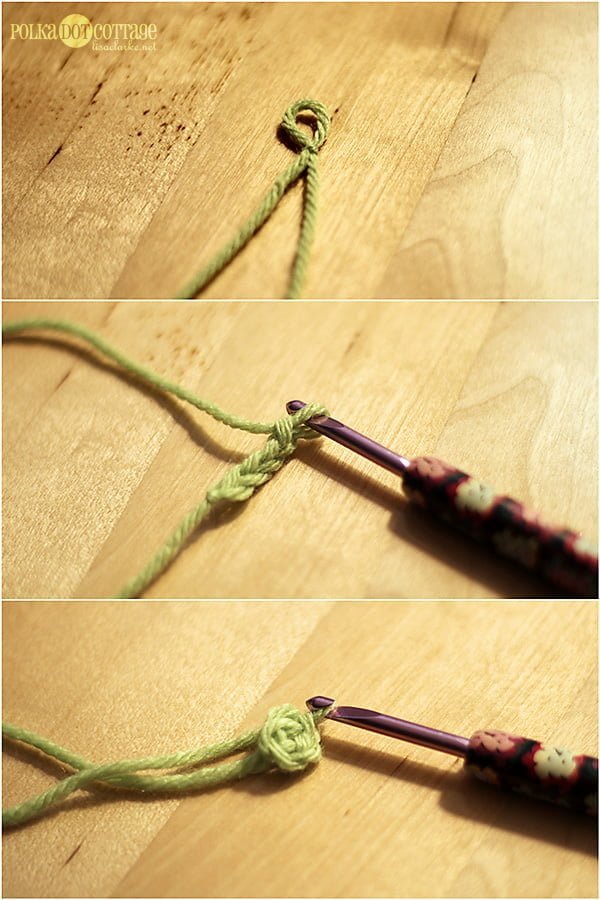

with light green: ch4, join with sl st in 1st ch
Round 1


ch3 (counts as dc here and throughout), ch1, [dc into center, ch1] 11 times
join with sl st at top of beginning chain
(12 dc, 12 ch – 24 sts total)
Round 2


ch3, dc into ch1 sp, ch1, [2dc into ch1 sp, ch1] 11 times
join with sl st at top of beginning chain
(36 sts)
Round 3


ch3, 2dc into ch1 sp, ch1, [3dc into ch1 sp, ch1] 11 times
join with sl st at top of beginning chain
(48 sts)
pull active stitch up to make a large loop and cut yarn, leaving a few-inch tail
Changing colors
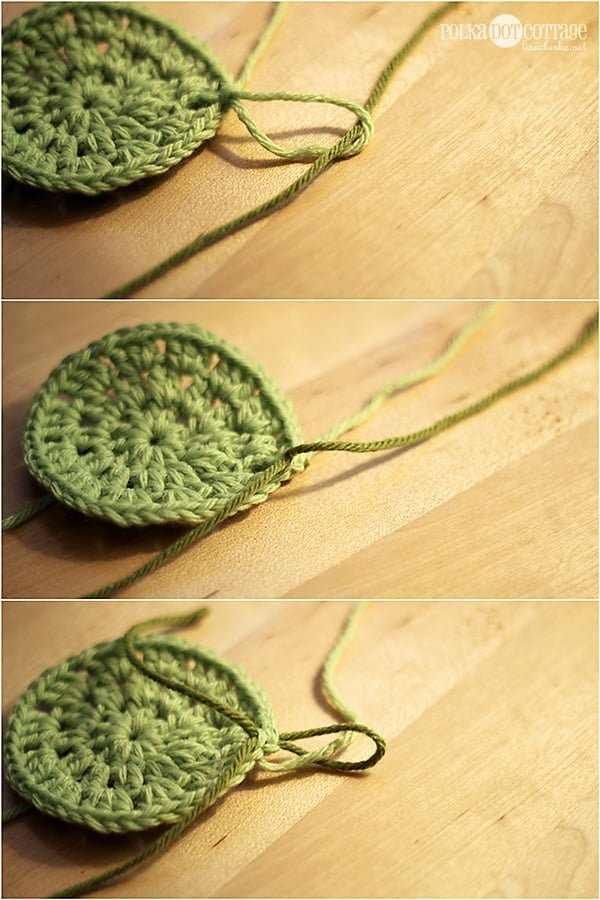

Here’s a little trick I figured out for changing colors without making knots.
Thread the new color (medium green) through the extended loop (front to back, or back to front, it doesn’t really matter).
Pull on the light green tail, closing the loop, and pulling until you see a little bump of medium green pop up at the back of the stitch.
Tug gently on the medium green to enlarge the loop.
What we’ve done here is effectively switched from a medium thread going through a light loop to a light thread going through a medium loop.
Hold the yarn tails toward the back of the work, insert your hook in this new medium loop, adjusting the size of the loop as necessary, and continue crocheting from here.
Round 4


Here is where we transform the circle into a hexagon.
We currently have 12 clusters of 3dc, and 12 ch1 spaces in between them. Six of these spaces will need to become corners, and the other six will become straight sides. With this round, and the next, straight side ch1 sts are filled with [3dc ch1]. Corner spaces are filled with [3dc ch2 3dc ch1]. As follows:
ch3, 2dc into ch1 sp, ch1, * [3dc, ch2, 3dc] into ch1 sp, ch1, 3dc into ch1 sp, ch1 **. Repeat from * to ** 5 times. [3dc, ch2, 3dc] into ch1 sp, ch1
join with sl st in top of starting chain
(78 sts)
Round 5


Switch to dark green.
ch3, 2dc into ch1 sp, ch1, 3dc into ch1 sp, * [3dc, ch2, 3dc] into ch2 sp, ch1, [3dc into ch1 sp, ch1] 2 times **. Repeat from * to ** 5 times. [3dc, ch2, 3dc] into ch2 sp, ch1, join with sl st in top of starting chain.
(102 sts)
Fasten off dark green.
Weave in all ends.
And there you have it – your first hexagon! Please let me know if you have any questions, if you find any errors, or if any of this could be made clearer.
Next in the series: how to join hexagons together as you crochet
GET THE EBOOK
All of the instructions and step-by-step photos for the entire project are available in this handy PDF. Click the thumbnail below for more details 🙂
-
%27%20fill-opacity%3D%27.5%27%3E%3Cellipse%20fill%3D%22%232a2930%22%20fill-opacity%3D%22.5%22%20rx%3D%221%22%20ry%3D%221%22%20transform%3D%22matrix(225.9917%20-51.69293%2016.7183%2073.08922%20249.8%20247.6)%22%2F%3E%3Cellipse%20fill%3D%22%23c1c4b4%22%20fill-opacity%3D%22.5%22%20rx%3D%221%22%20ry%3D%221%22%20transform%3D%22matrix(-183.6986%2044.50994%20-12.50481%20-51.60907%20230.3%2025.6)%22%2F%3E%3Cellipse%20fill%3D%22%23c5c2d5%22%20fill-opacity%3D%22.5%22%20rx%3D%221%22%20ry%3D%221%22%20transform%3D%22matrix(-.4154%20-29.74894%20211.47437%20-2.95293%20145%20404.6)%22%2F%3E%3Cpath%20fill%3D%22%23a2b444%22%20fill-opacity%3D%22.5%22%20d%3D%22M177.4%20209.7l-180%2055L-48.1%20116l180-55z%22%2F%3E%3C%2Fg%3E%3C%2Fsvg%3E)
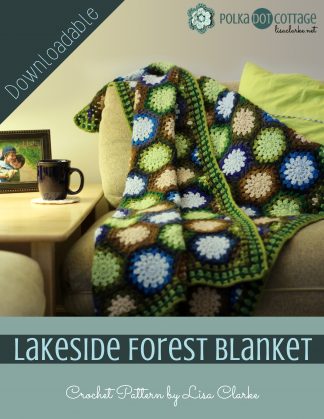
Lakeside Forest Blanket Crochet Pattern
$4.99 – $9.99 Select options This product has multiple variants. The options may be chosen on the product page


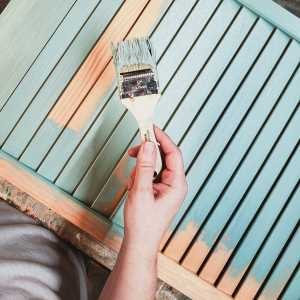











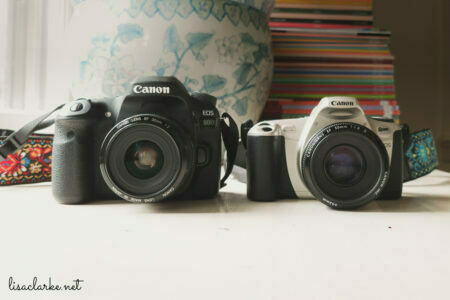











Lisa, how do you weave your ends in? When I’m doing a color change I almost always leave the tail of the yarn flat against the previous row and then just crochet right over it with my new color. However, for really loose stitches this isn’t necessarily the best method, so…how do you weave in your ends?
I will admit I am least confident about that part. Crocheting over the ends doesn’t really work for granny squares, so I have another method, in which I pretty much cross my fingers and hope for the best 😉
I usually take both ends together, and pull them through a section of stitches that looks fairly tight and particularly tunnel-like. Then, I turn around and go the other way through the tunnel, and do it again one more time. Then snip!
Maybe I should do a photo tutorial for that, too. Think it’s necessary?
I know exactly what you mean. I attack grannies the same way. Only when I’m choosing my section of stitches I normally go for a corner because it’s where you have LOTS of tightly compact stitches.
As for the photo tutorial…if you have made 50 grannies and use my normal weave in method it would probably be super helpful. I’ll see if I can’t snap a few photos tonight (b/c you know I’m going to test this granny square) and write something up. If I’m successful I’ll send it to you and we can share the love. 🙂
I do the exact same thing with the corners 🙂
If you do snap a few photos, that would be great. I’ll definitely share the link!
I want to try this maybe when I get home from work….maybe 🙂 This would be a great scrap yarn pattern. Okay…I will try. I know I have told you in the past, will tell you again..I LOVE how you put colors together!!
Have a happy one!!
Thanks, Janie! Color is one of my favorite things to play with 🙂
Thank you for this! I’ve been admiring your hexagons and I am dying to make some!!
Great! I hope you find them easy enough – let me know if there is any confusing bits!
These look great! When you will post the next set of instructions (for the join-as-you-go?)
Thanks!
Monday! 🙂
I love your hexagons and your color ideas but I especially love your idea for changing colors. I knit more often than I crochet but I just happen to be finishing up a crocheted bag made of 16 squares. I tried your idea and love it. I am making my forth Inga bag (http://www.ravelry.com/projects/Francieos/ingas-hakelbeutel)for a friend who saw mine and just had to have one. She is a polymer clay artist and we are trading so I know I will get a great piece of art as a swap.
As far as weaving in the tails, I like crocheting over them as I start the new color. Much easier than weaving in the tails in knitting.
I find it hard to crochet over the tails when I’m doing granny squares, because there are so many gaps in the stitching. You don’t find that to be an issue? Maybe I should try it on my next hexagon. If I like it, it will sure beat weaving them all in! I got the idea when I saw this Russian Join. I love that, but couldn’t figure how to get it to change in exactly the right spot. If I could, that would be great – no ends at all!
[…] Work the hexagon pattern through Round 4. […]
I’m not the greatest crocheter, but know how to do the basics for the most part. This blanket looks like an excellent project, but I want to practice making the granny hexagons before I go out and buy nice yarn. I have a ton of “cheap” yarn from when I taught myself several years back (and couldn’t afford better), but there have been several years (10+) in between when I’ve done no crocheting at all, so I’m trying to re-learn everything. While trying to making my first one, the yarn curled quite a bit. Could that be from my stitches possibly being too tight, or yarn quality? I’m wondering how much the yarn would make a difference in that, if at all.
Hmm, I’m not really sure! Maybe the fiber content of your yarn is just the type to curl? It’s possible old, cheap acrylic will do that.
One thing to check, is to make sure you have the right number of stitches. Too many of them can result in a wavy hexagon.
I am only counting 36 stitches not 48, have I misinterpreted something?
Do you mean on Round 3? You should count the chains (12) as well as the double-crochet stitches (36). Does that answer your question, or are you looking at a different round?
Yes, for round 3 but I’ve realized my mistake. Lisa, do you think I can stop at round 4 thus creating a slightly smaller hexagon?
Hi, Sorry if I am being a bit dense, but is this pattern US or UK crochet terms? Thanks for your help – really lovely hexagons and a lovely colour scheme.
Oh, no, you are not dense at all! I am sorry for not mentioning that – it never even occurred to me! How silly of me. It is in US terms.
Once one has a bunch of hexagons and they are all joined together, how does one create an even edge to the piece?
Hi, Linda. I wrote another post about that exact thing. You can find the instructions here.
Can do this all in one color?
Definitely! You can change colors at the beginning of any round that you wish, or not at all 🙂
Hi I really want to try this roughly how many hexagons did you use and how big was end blanket sorry if this is written anywhere new to pinterest so still working out how to do everything
Hi, Alicia. The hexagon blanket I made ended up being roughly 40″x50″ (I don’t have the exact measurements handy, but it’s a generous lap size). I used 95 whole hexes and a bunch of partial hexes to square off the edges. I hope this helps! There’s a pattern and/or tutorial available here, if you prefer to have it all in a handy PDF.